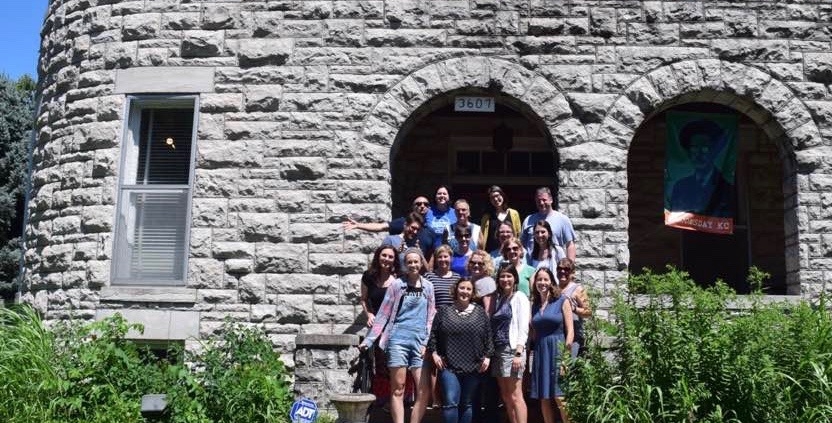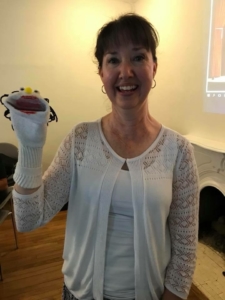It’s that time of year — the dreaded preparation time for state assessments!
Over my career, many folks told me “Just don’t worry about it.” The reality for a classroom teacher is we have an obligation to our students, to their parents/guardians, and to the other stakeholders of our communities to do what we can to prepare students both academically and emotionally.
I am a parent and a community stakeholder, too, you see, and as such, I support measures for reducing the number of tests, I participate in writing and evaluating assessment questions, and I advocate for kids always. But if students will be tested, I will help them prepare.
Although most tests are a combination of reading and writing (and a few other topics), I am going to zoom in on writing for this post.
In recent years, as we approached review time, I would lead a book chat on the Divergent. Most of my students have read the series, but there were always a few who were not familiar with the story. Then students would line up and draw for their “faction,” an idea I stole from colleague Mindy Bishop years ago. Throughout test review time, usually two weeks, students sat with their factions, and each day, I presented the factions a challenge. Often students had to work individually on the task first, but I built in a collaborative element to each challenge. As a team, the factions scored points every day. (These were not grades or points for the gradebook.) Setting up the review in this way made it fun, and honestly, the students put more effort that usual into each task.
I recently heard from Mindy, and here’s her new spin on making assessment review fun: “I called it March MAP Madness. The kids were different college basketball teams from the tournament, and the different MAP prep activities scored them points for their teams. It was a huge hit with the kids. The championship team from each hour “won” a pizza lunch with me. They worked so hard to be the winner. I just love middle schoolers!”
To review for an on-demand writing assessment, I usually start with prompt analysis. If students cannot determine exactly what they are being asked to do, they cannot be successful. Some questions for prompt analysis include the following:
- What exactly is the prompt asking me to address in my answer?
- How many tasks are listed in the prompt?
- In what format should the answer be?
- How should I support my answer?
- How will my answer be evaluated?
- What process should I go through to accomplish this writing task?
While I model with a true prompt, one way to add fun is to ask students to devise silly, overly complicated prompts. Then they trade, do a prompt analysis, and share their results with the class. Be ready to laugh during the sharing part!
Next, I remind students not to skip prewriting. For most of us, the most difficult part of writing is simply gathering ideas and starting. Students can go into all-out panic mode just looking at the blank writing space! If you have been utilizing strategies such as Writing into the Day with quickwrites, your students only need a gentle reminder of tools in their toolbox, such as
- Quickwrite strategies for prewriting
- Protocols and reading strategies to approach prompts and articles
- Habits of mind to “enter the conversation” and to think about all perspectives
For tests, I think the most powerful strategy is the writing sprint. If students have practiced writing quickly from a word, picture, or simple prompt, they can utilize this strategy to get their thoughts started on the topic, and the simple act of stream-of-consciousness writing may calm their nerves.
As a way to practice without simply asking each student to write an essay, I often ask students to spend 10-20 quiet minutes writing ideas for answering a prompt, followed by time to share and discuss. Then students collaborate on an outline or draft, depending on time. Another approach is to ask everyone to write a quick draft, and then the group creates one draft, incorporating parts from everyone’s quick draft. The real benefit to these strategies is the conversation and negotiations the students have with each other as they work together.
Another activity I used many times was to provide students with student essays I had saved from previous years. Students highlighted parts they felt were successful in one color and unsuccessful in another color. Then they wrote feedback based on the checklist and/or rubric that would be used for the assessment. Usually the students were more critical than I was when I provided feedback!
If you need practice prompts, I have written two Missouri examples and linked them here:
http://tinyurl.com/EOC-sample-2019
https://tinyurl.com/SampleMAP2019
The MAP prompt is argumentative. (In Missouri, the EOC is a high school assessment, and the MAP is a middle school assessment.)
An important point to note is that some students need strategies for calming anxiety even after you have provided them with all they need to be successful. I found that having a conference to talk through the strategies students might use to calm the anxiety was worthwhile. It didn’t take away the anxiety, but the students knew I supported them and would be pulling for them on test day, and that’s worth something.
Want more ideas? See this work from the Plymouth Writing Project!
Good luck to everyone, teachers and students alike!




